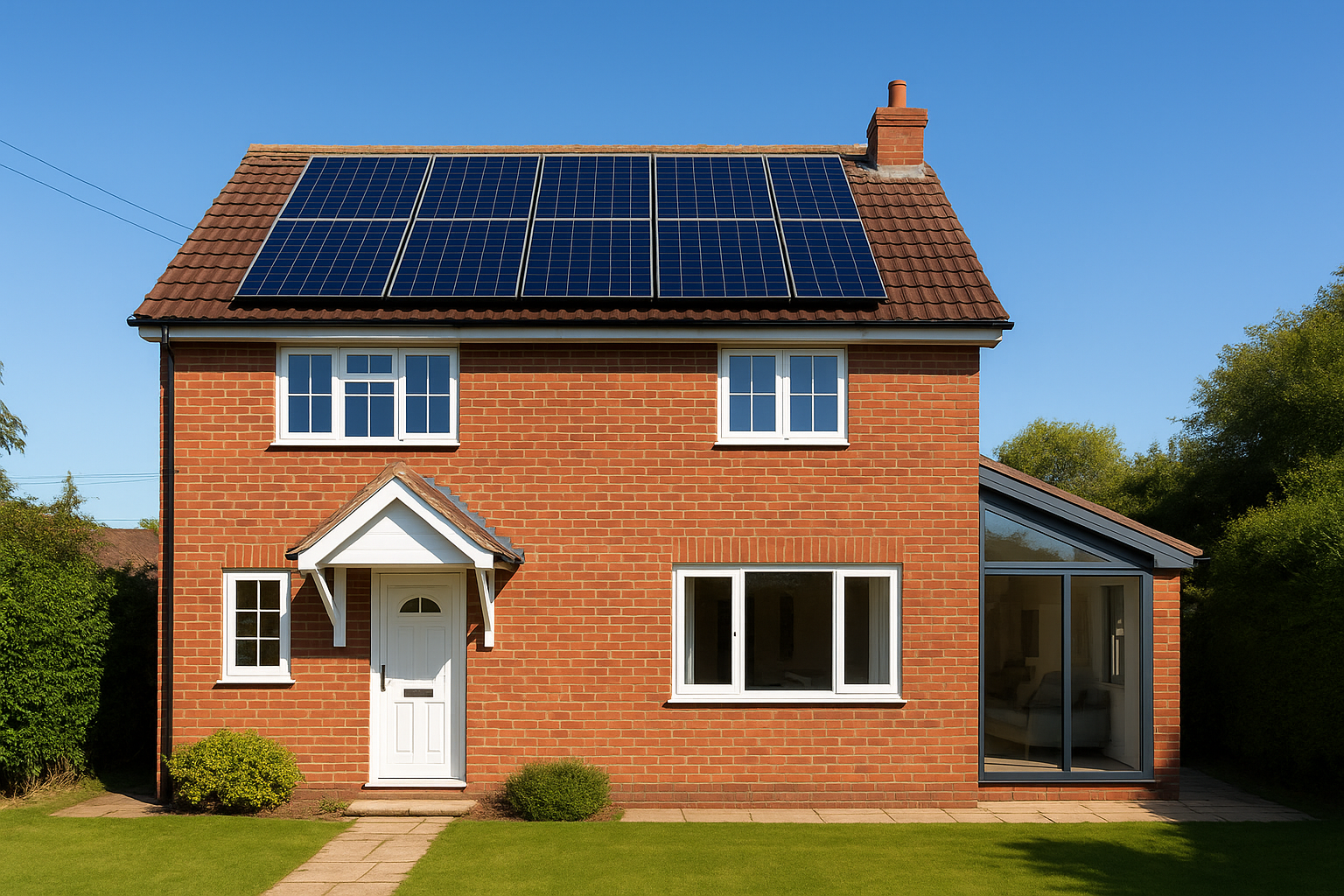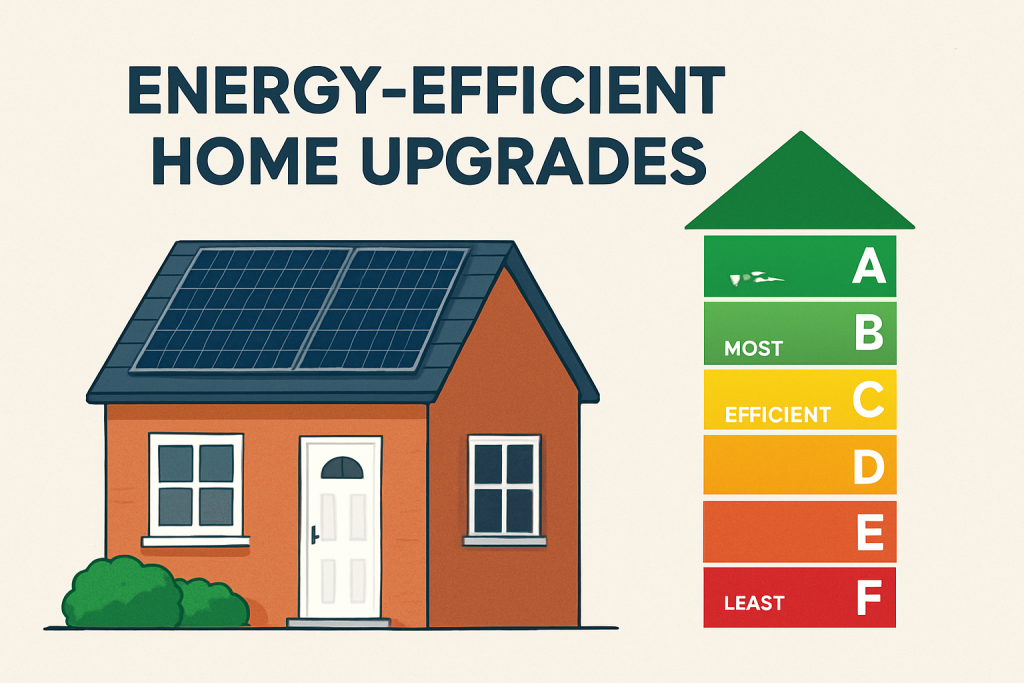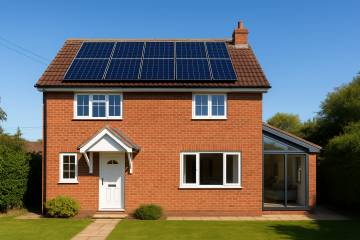
Energy-Efficient Home Upgrades That Pay Off in the UK
Looking to cut energy bills and boost your property value? These upgrades do both.
✅ Top 3 Upgrades: Loft insulation, double glazing, smart heating
💷 Typical Savings: £200–£1,000 per year
🏡 Grants: ECO4, Great British Insulation Scheme, Boiler Upgrade Scheme
📈 EPC Value Uplift: Up to 15% higher home value for big EPC jumps
Why energy efficiency matters now
With UK energy bills still high and new EPC rules tightening, improving efficiency is now both a financial and regulatory necessity. According to UK official figures, in Great Britain around 4.5 million energy-efficiency measures have been installed in 2.8 million homes through government schemes since 2013. Yet, most homes still rate Band D or below, meaning there’s major potential to save.
Homeowners who improve their EPC ratings often benefit from lower fuel bills and higher resale values. For example, properties upgraded from EPC rating D to C may see value increases of around 3%, while jumps from F to C have shown uplifts up to 15%.
Top UK Home Energy Upgrades (2025)
| Upgrade | Typical Cost (UK) | Annual Savings | Payback Period | Grant Eligibility |
|---|---|---|---|---|
| Loft insulation | £600–£1,200 | £200–£400 | 5–10 yrs | ECO4 / GBIS |
| Cavity wall insulation | £1,000–£2,500 | £250–£450 | 6–9 yrs | ECO4 / GBIS |
| Double glazing | £4,000–£8,000 | £200–£300 | 15–20 yrs | Limited / ECO4 add-on |
| Smart thermostat & valves | £100–£400 | £100–£150 | 2–3 yrs | Possible under ECO4 |
| Air-source heat pump | £7,000–£13,000 | £400–£1,000 | 8–12 yrs | Boiler Upgrade Scheme |
| Solar PV (4 kW) | £5,000–£7,000 | £400–£700 | 8–10 yrs | 0% VAT + SEG payments |
(Estimates from Energy Saving Trust and gov.uk, 2025 data)
How to understand your home’s baseline
What is an EPC rating?

An Energy Performance Certificate (EPC) rates your home’s energy efficiency from A (most efficient) to G (least efficient). It shows estimated energy-costs, CO₂ emissions and recommendations for improvement.
Where does your home lose heat / energy?
Typical problem areas in UK homes are:
- Loft/roof – significant heat loss if insulation is poor or absent
- Walls (especially solid walls) – less well insulated than cavity walls
- Windows and doors – older single-glazed or poorly sealed units lose heat
- Heating system & controls – inefficient boilers, lack of smart controls = wasted energy
- Appliances, lighting & draughts – smaller-scale losses that add up
Tip: Homes built before 2000 often have minimal insulation — start there.
Quick self-check: Is your home energy-leaking?
- High fuel bills compared with neighbours?
- Your EPC rating is D or worse (D, E, F, G)
- Property built pre-2000 and hasn’t been flat-modernised
- Roof insulation under 100 mm, single-glazed windows or little heating control
Top energy-efficient upgrades and what they deliver
Here are the most strategic upgrades for UK homeowners:
Loft & wall insulation
- Insulation is your best first move. Around 25% of household heat escapes through the roof
Why: Insulation reduces heat loss, improves comfort and lowers bills.
Typical cost & savings: UK government data shows about 67% of homes with a loft have insulation, and 71% of homes with cavity walls are insulated. Typical cost is around £600–£1,200, with savings of between £200–£400 / a year.
Impact: According to Energy Saving Trust, upgrading your loft insulation and heating controls can improve EPC rating and reduce annual bills.
Grant support: Many homes may qualify under schemes such as the Energy Company Obligation (ECO) (particularly ECO4) or the Great British Insulation Scheme for certain property/household types.
Local cost (Reading & Berkshire): loft insulation averages ~£800 for a 3-bed semi.
Double/triple glazing
- Reduces heat loss and outside noise.
Why: Old or single-glazed windows let significant heat escape; upgrading improves insulation and sound reduction.
Cost vs value: Cost: £4k–£8k, Savings: £200 / yr
Value uplift indicator: Homes with better EPC ratings show higher sale values.
Tip: If your property is in a conservation area or listed building, look for heritage-style double glazing or secondary glazing solutions to meet regulations.
Smart heating systems & controls
Why: Modern smart thermostats, radiator valves and zoned heating help reduce wastage.
Savings: According to Energy Saving Trust, even turning the thermostat down by 1 °C may save around £90 per year in Great Britain.
Grant eligibility: Some funding under ECO4 includes heating controls when packaged with insulation or other core upgrades.
Solar panels & battery storage
Why: Generating your own electricity reduces grid-dependence, and storing surplus power enhances value.
Cost: £5k–£7k
Savings: £400–£700 / yr
Incentives: Under the 0% VAT rate for domestic solar installations (currently until 2027) and under the Smart Export Guarantee (SEG) you may earn for energy you export.
Benefit: Homes with renewables are increasingly sought after. Solar homes also attract eco-minded buyers.
Heat pumps
Cost: £7k–£13k
Savings: £400–£1,000 per year
Grant support: Up to £7,500 via Boiler Upgrade Scheme
Important note: Heat pumps deliver best returns when the property is well-insulated, so combining upgrades is key.
Smaller upgrades: lighting, appliances, draught‐proofing
- Swap all bulbs for LEDs (save ~£60 per year)
- Draught-proof doors/windows (simple DIY fix)
- Use A++ appliances
- Add reflective radiator panels and pipe lagging
Grants, tax breaks & funding schemes — what you need to know
Major UK schemes
ECO4 (Energy Company Obligation): The UK government’s flagship scheme, delivered by energy suppliers, aiming to deliver insulation and heating upgrades to lower-income homes and those with lower EPC ratings.
Boiler Upgrade Scheme (BUS): Offers grants towards low-carbon heating systems (such as heat pumps).
Great British Insulation Scheme (GBIS): Available for eligible homes (EPC D or below). Focus on loft & wall insulation. Apply here
Step-by-Step Grant Application
1️⃣ Check EPC rating → EPC Register
2️⃣ Confirm you meet criteria (EPC D or below, income limits if applicable)
3️⃣ Find an accredited installer (MCS or TrustMark certified)
4️⃣ Request a free survey / quote
5️⃣ Installer handles application for ECO4 or BUS grants
What to watch out for
Not all upgrades deliver short payback — always check cost vs savings. For example, upgrading from EPC D to C may cost around £6,000 on average.
Ensure the contractor is reputable — issues with poor installations have been flagged in some schemes.
How to protect yourself:
- Use only TrustMark or MCS-approved installers
- Ask for insurance backed warranties
- Get at least 2 quotes
- Recheck EPC rating after work is done
Case study for a property in Reading, Berkshire:
Before: EPC D (62)
Upgrades: 270 mm loft insulation + Hive Smart Heating
Cost: £950 (£250 covered by GBIS)
After: EPC C (71)
Savings: ~£280 per year / Value increase ~£9,000
How energy-efficiency upgrades boost property value
Buyers are increasingly aware of running costs and energy performance. According to research:
- Improving a home’s EPC from D to C can add ~3% to value (e.g., ~£11,000 on the average UK home).
- Homes with higher EPC ratings typically attract more interest, sell more quickly and sometimes command premium prices.
- For sellers and landlords, regulations requiring higher EPC ratings mean homes with poor ratings may face delays or price reductions.
Your 6-Step Roadmap
1️⃣ Check your EPC rating online
2️⃣ Identify heat loss areas (loft, walls, windows)
3️⃣ Get quotes & apply for grants
4️⃣ Start with low-cost wins (LEDs, draughts)
5️⃣ Install major upgrades (insulation, smart heating, heat pump)
6️⃣ Recheck EPC rating & market your improved home
FAQ – Frequently Asked Questions
How fast do energy-efficiency upgrades pay off?
It depends on the upgrade. For example, insulation may pay back in 5–10 years, smart heating within 2–3 years, while a full heat‐pump system might take longer. Average costs for upgrading from EPC D to C are around £6,000.
Will upgrading just one element (like windows) make a big difference?
Yes — but the greatest impact comes when you combine multiple upgrades (insulation + heating + glazing). Stand-alone upgrades still help, but may deliver smaller shifts in EPC rating or annual bills.
What if I plan to sell in the next 3-5 years — is it still worth upgrading?
Absolutely. With buyer demand shifting, homes with better energy‐efficiency are increasingly preferred. Plus, having documented improved EPC and fuel bills is a marketing advantage.
My home is old/historic/solid-wall — are upgrades still possible?
Yes. Solid-wall insulation, secondary glazing, and smart heating controls are all valid options. Some grants target harder-to-treat homes specifically.
Are heat pumps worth it for older homes?
Yes, if well insulated. Combine with loft and wall upgrades for maximum return.
Which schemes are still open in 2025/26?
ECO4, Great British Insulation Scheme and Boiler Upgrade Scheme are active. Check eligibility before applying.
Final thoughts
Investing in energy-efficient home upgrades is one of the best ways to cut bills, reduce carbon impact and raise your property’s value.








